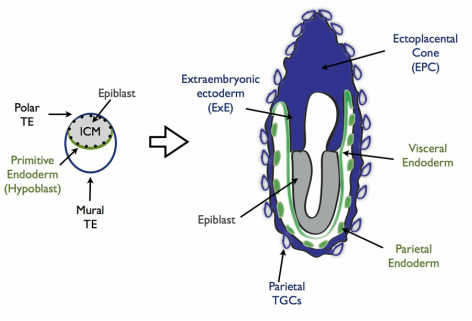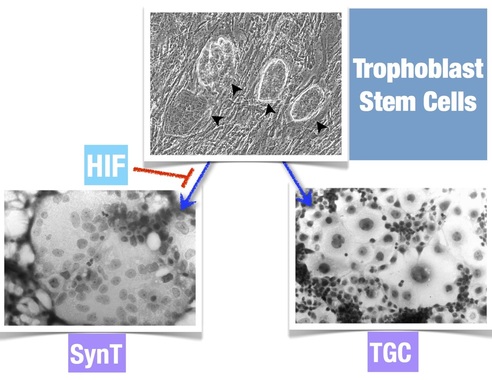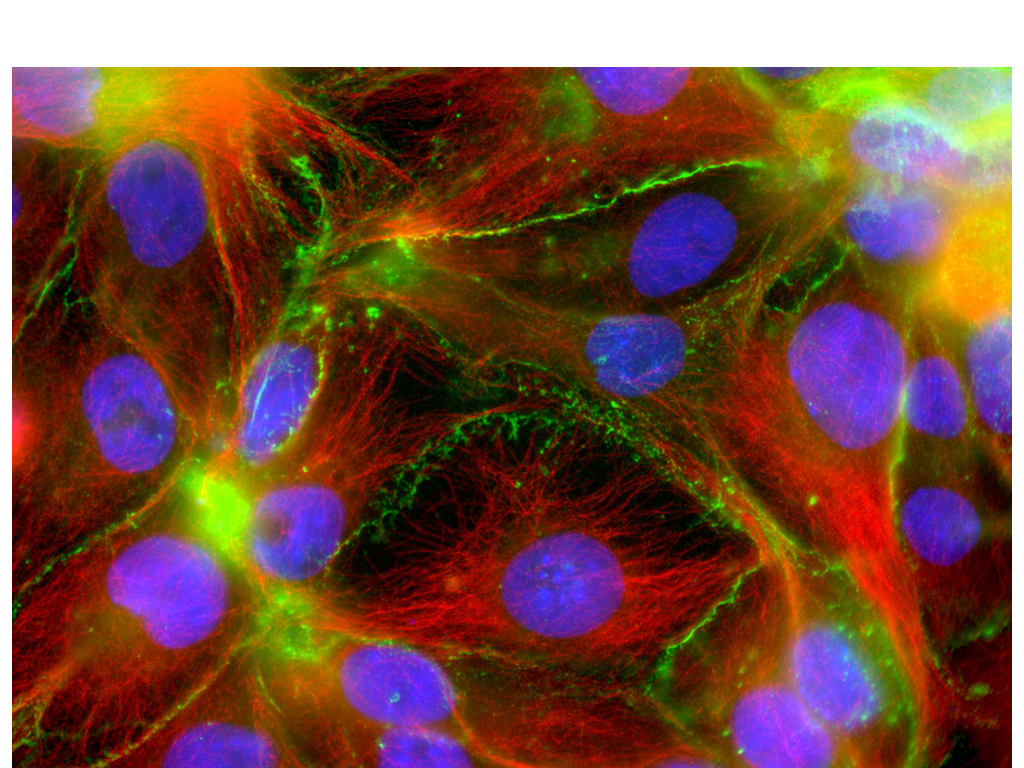|
Trophoblast stem cellsTSCs can be derived from the rodent blastocyst or early embryo and gives rise to many of the cell types comprising the mature placenta. We have been studying the ability of the Hypoxia-inducible Factor (HIF) family of transcriptional regulators to determine cell fate decisions of TSCs. We have discovered novel oxygen- and canonical target gene-independent roles for HIF in this process.
|



